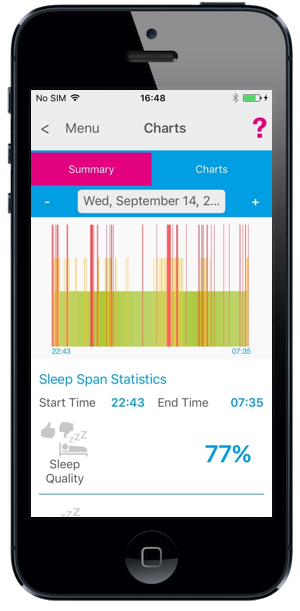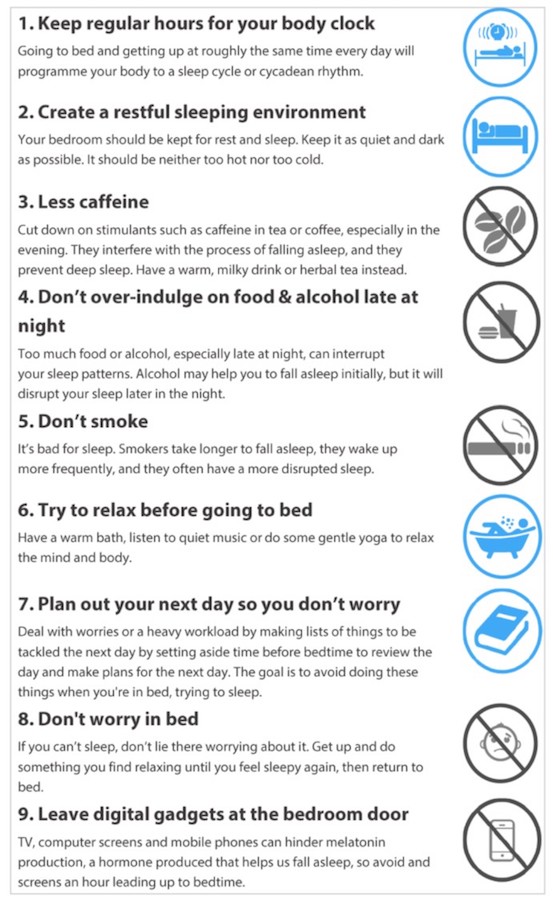There is a new sense that a growing lack of sleep or insomnia can store up future health problems for us. Some would even go far enough to say: “Sleep is a key marker of health and good sleep habits are critical for improving the quality of life (1).” This is supported by considerable research indicating the scale of insomnia and that significant sleep disorders are associated with reduced quality of life, increased healthcare costs, and increased risks for serious mental health and medical comorbidities (2,3).
Insomnia is the difficulty of getting to sleep or not staying asleep for long enough to feel refreshed the next morning. There are many triggers for insomnia and these generally fall into the categories of: stress and anxiety, a poor sleeping environment, lifestyle factors, mental and physical health conditions and certain medicines. But sometimes there just doesn’t seem to be a plausible cause.
Sleep-deprived workers are costing the UK economy £40bn a year and face a higher risk of death, says a recent study. With the calculation based on tired employees being less productive or absent from work (4). The main impact was on health, with those sleeping less than six hours a night 13% more likely to die earlier than those getting seven to nine hours.
So how much sleep should we be getting?
Guidelines from the National Sleep Foundation in the US, provide helpful recommendations of how many hours of sleep you need at every stage of your life (1). The sleep range for newborns to 3-month-olds should get 14 to 17 hours of sleep a day; school-aged children (6-13 years) should be getting 9 to 11 hours; teenagers (14 – 17 years) should range from 8 to 10 hours; adults 7 to 9 hours and older adults (65+ years) 7 to 8 hours each night.
So, do you wake feeling tired and exhausted, ready to put your alarm back into snooze mode or do you jump out of bed ready to take on an active packed day? Do you know if your sleep quality is good, indifferent or poor?
Well there’s been a bit of a consumer pull for consumer-friendly sleep testing devices. And not surprisingly we generally prefer to undertake sleep testing at home, because it’s more comfortable, more cost-effective, and those of us who have insomnia are willing to tackle the problem by self-monitoring.
And researchers agree that having insomnia, we are more likely to investigate self-monitoring or recording of our sleep on a night-by-night basis with a sleep diary or other tracking devices (5,6).
One such device on the market is the Activ8rlives BuddyBand2 Waterproof Health Fitness Activity and Sleep Tracker Smart Watch. It tracks your sleep patterns and cycles, allowing you to understand when you are in a deep-, light- or disturbed-sleep cycle, therefore helping you to become more aware of your patterns and take more control of your sleep.




Other than stating the obvious of going to bed earlier, the Sleep Council suggest following these 10 tips to send you off to blissful solid sleep, waking refreshed in the next morning (7).
So, what’s the trick to getting a good night’s sleep?
In a Sleep in America® poll those who categorised themselves as vigorous exercisers had fewer sleep problems in the previous two weeks than the other subsets of moderate or non-exercisers (8). Less time sitting during the day was also associated with better sleep and health quality.
While the Sleep Council would advocate not undertaking vigorous exercise too close to bedtime, there were no major differences found between the data for individuals responding to the Sleep in America® poll. The conclusion they drew was that exercise or physical activity in general, is good for sleep, regardless of the time of day of the activity performed (8).
A miracle cure points to evidence that regular physical activity can improve your sleep quality as well as reducing your risk of dementia, type-2 diabetes, some cancers, depression, heart disease, other serious common conditions – reducing the risk of each by at least 30%.
Activ8rlives has always supported habitual activity with its free Activ8rlives membership to record your activity and many other health parameters. Why don’t you combine the multi-feature BuddyBand2 as your activity tracker with built-in sleep tracker combined available via our website www.activ8rlives.com.
References:
(1) Maurice Ohayon, et al. National Sleep Foundation’s sleep quality recommendations: first report. Sleep Health: The Official Journal of the National Sleep Foundation. February 2017 Volume 3, Issue 1, p6–19.
(2) M. Daley, et al. The economic burden of insomnia: Direct and indirect costs for individuals with insomnia syndrome, insomnia symptoms, and good sleeper. Sleep, 2009, vol. 32 (p55-64).
(3) S.D. Kyle and K Morgan, et al. Insomnia and health-related quality of life. Sleep Med Rev, 2010, vol. 14 (p69-82).
(4) Marco Hafner, et al. Why sleep matters — the economic costs of insufficient sleep: A cross-country comparative analysis. RAND Corporation, 2016. Accessed 9/2/17 http://www.rand.org/pubs/research_reports/RR1791.html
(5) R.R. Bootzin, et al. Behavioural treatments for insomnia. Progress in behaviour modification, 1978, vol. Vol 6. New York Academic Press (p1-45)10.
(6) R.R. Bootzin, et al. The assessment of insomnia, Behav Assess. 1981, vol. 3 (p107-26).
(7) The Sleep Council. https://thesleepcharity.org.uk/wp-content/uploads/TSC-Advice-Sheets_Creating-a-Good-Bedtime-Routine_Online.pdf Accessed online 9/2/17
(8) Sleep in America® poll. National Sleep Foundation reports, 2013, 2014, 2015. Accessed 9/2/17 http://www.sleephealthjournal.org/content/sleepinamerica
